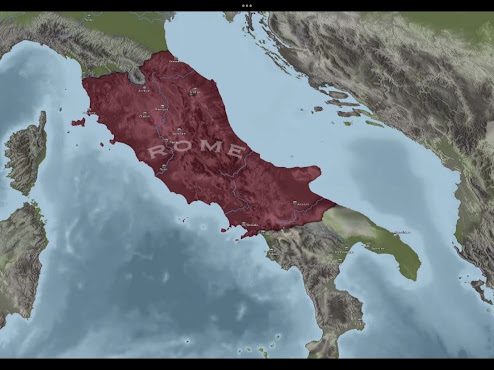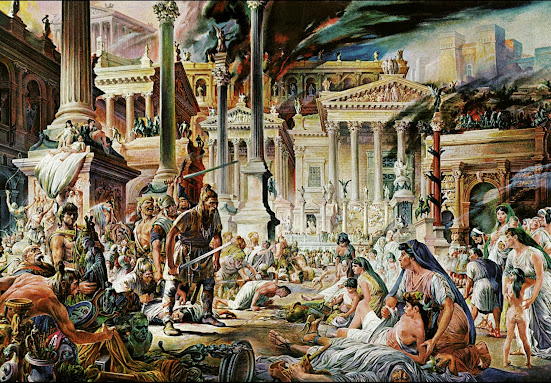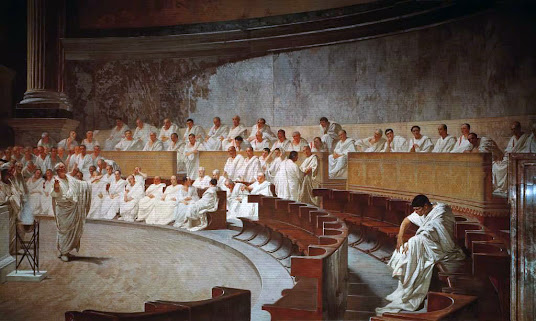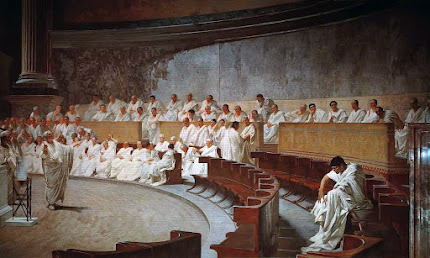In the previous episode we stopped when Rome decided to attack Carthage itself by sea under the command of the Roman council, Marcus Atilius Regulus. First, the Romans invaded the city of Aspus, east of Carthage, after a short siege. Realising the dangerous situation, the Carthaginian senate selected, Hasdrubal the son of Hanno and Bostar, as councils and summoned Hamilcar Barca and his fleet to protect Carthage from the Roman invasion. The Roman general headed toward the city of Adys, south of Carthage. The Carthaginian army marched to Adys where the battle of Adys took place. The Carthaginian army was defeated with light losses. Then, the victorious army headed wast to the city of Tunisia which only 16km far from Carthage. After seeing how bad the situation is, the Carthaginian senate sent a letter to Regulus to open negotiations asking for peace. The Roman council imposed prejudicial terms. Carthage refused the terms and chose war. In the beginning of 255 B.C, Carthage selected, Zansibas, on of the spartan mercenaries to lead the army against Rome. Zansibas realised that the Carthaginian advantage was the elephants and horses, so he want the battle to be in an open plain to exploit this advantage. Then Zansibas led the Carthaginian army to the city of Tunisia to meet the Romans in what will be known the battle of Tunisia. The Carthaginian army had 12000 infantry, 4000 cavalry and 100 elephants. On the other hand, the Roman army had 15000 infantry and 500 cavalry. The Carthaginians achieved a crushing victory. The Roman army was annihilated only 3000 infantry survived the carnage. The Carthaginians captured Regulus, then executed him as a revenge for his war crimes. Soon after, Rome had sent a fleet of 350 ships to North Africa to save the survivals who retreated to Apsus. Carthage responded by sending 200 ships to prevent them from doing so. A new naval battle took place, despite the Carthaginian superiority in the beginning of the battle, the Roman fleet managed to achieve victory with 114 Carthaginian ships were captured by the Romans. Although the Romans won this naval battle, the Roman campaign on North Africa had failed, and the Roman fleet decided to return to Rome. But a disaster happened, when the Roman fleet reached near the city of Karmarina in southern Sicily, a terrible storm rolled in leading to destruction of approximately 280 ships out of 360. Learning about the disaster, Carthage tried to exploit the situation and sent a fleet to Sicily. Having reached the city of Agreguntum in eastern Sicily, the Carthaginian army destroyed the city. Unexpectedly, Rome managed to rebuild her fleet in less than a year. The new fleet consisted of more than 220 ships. The new fleet sailed into the city of Panormus in west northern Sicily which was under the control of Carthage. The Romans invaded the city killing the entire inhabitants and taking the rest as slaves. One year later, Rome renewed its incursions on North Africa, but again the campaign failed utterly, because of new storm which destroyed nearly 150 ships out of 220 which were sent to invade North Africa. After the utter failure of the invasion of North Africa, Rome decided to concentrate her efforts in Sicily managing from conquering the city of Thermii in the north of Sicily.
251 B.C Hasdrubal raised a huge army and marched toward Panormus to recapture it, but the Carthaginian army failed utterly to take the city and the Romans emerged victorious. The number of losses for both sides is unknown. Invigorated by victory, Rome mustered in army of 110000 troops and 200 ships under the command of Publius Claudius Pulcher to march toward the city of Lilybaeum west of Sicily which was under Carthage’s control in 250 B.C. Carthage responded by sending many ships to evacuate the city from its civilians inhabitants to reduce pressure on food supply. Seeing that this siege will take a long time, Pulcher, in unexpected move, decided to attack the main Carthaginian fleet in the city of Drepana, to the north of Lilybaeum, in 249 B.C, arguing that if Rome managed to capture Drepana, Lilybaeum will surrender inevitably. But, due to Roman’s inexperience in naval battles, the Roman attack lost the element of surprise and Carthage’s navy detected the attacking Roman fleet and counterattacked it leading to destruction of nearly 93 Roman ships and killing of 20000 Roman soldier. Following that, the Carthaginian fleet headed toward Lilybaeum coast and burned many Roman ships which was besieging the city. Rome responded by sending nearly 100 ships to supply the Roman troops which was in besiege of Lilybaeum. But unfortunately for the Romans, a terrible storm destroyed most of their fleet. Back to the siege of Lilybaeum, the Carthaginians used the hit and run style of war to burn the Roman’s camps causing sever losses for the Romans. Aware of the futility of the siege, the Romans lifted the siege. 247 B.C, Hamilcar Barca reached Sicily to command the whole Carthaginian troops in Sicily. Hamilcar Barca managed to achieve many great victories over 3 years in Sicily, but he was not able to deliver the decisive blow to the Romans due to lack of supplies from Carthage as Carthage at that time was busy fighting the North African tribes. 243 B.C Rome decided to re-build her fleet. Indeed, they made nearly 200 ships. Short after, Rome decided to sail to Sicily and besiege Lilybaeum and Drepana to prevent Carthage from sending supplies to Hamilcar Barca. Carthage decided to send supplies to the besieged city, but the Roman fleet was awaiting. A deceive naval battle happened in the western coast of Sicily near Lilybaeum ending by a Roman victory and destruction of nearly 60 ships and capture of 70. Due to lack of supply and sever exhaustion of Carthage, Hamilcar Barca decided to begin negotiations with Rome. A peace trade signed between Rome and Carthage ending by this the first Punic war with Roman landslide victory . The terms of the treaty were as follows : first, the Carthaginians must get out of Sicily entirely. Second, Carthage must release the Roman prisoners immediately. Third, Carthage must pay a large annual tribute to Rome. Lastly, Carthage must abandon all the islands in the Mediterranean. The story haven’t ended yet, 23 years later, Hannibal Barca, the son of Hamilcar Barca, will lead a tremendous campaign to invade Rome itself leading to the eruption of the second Punic war.






















